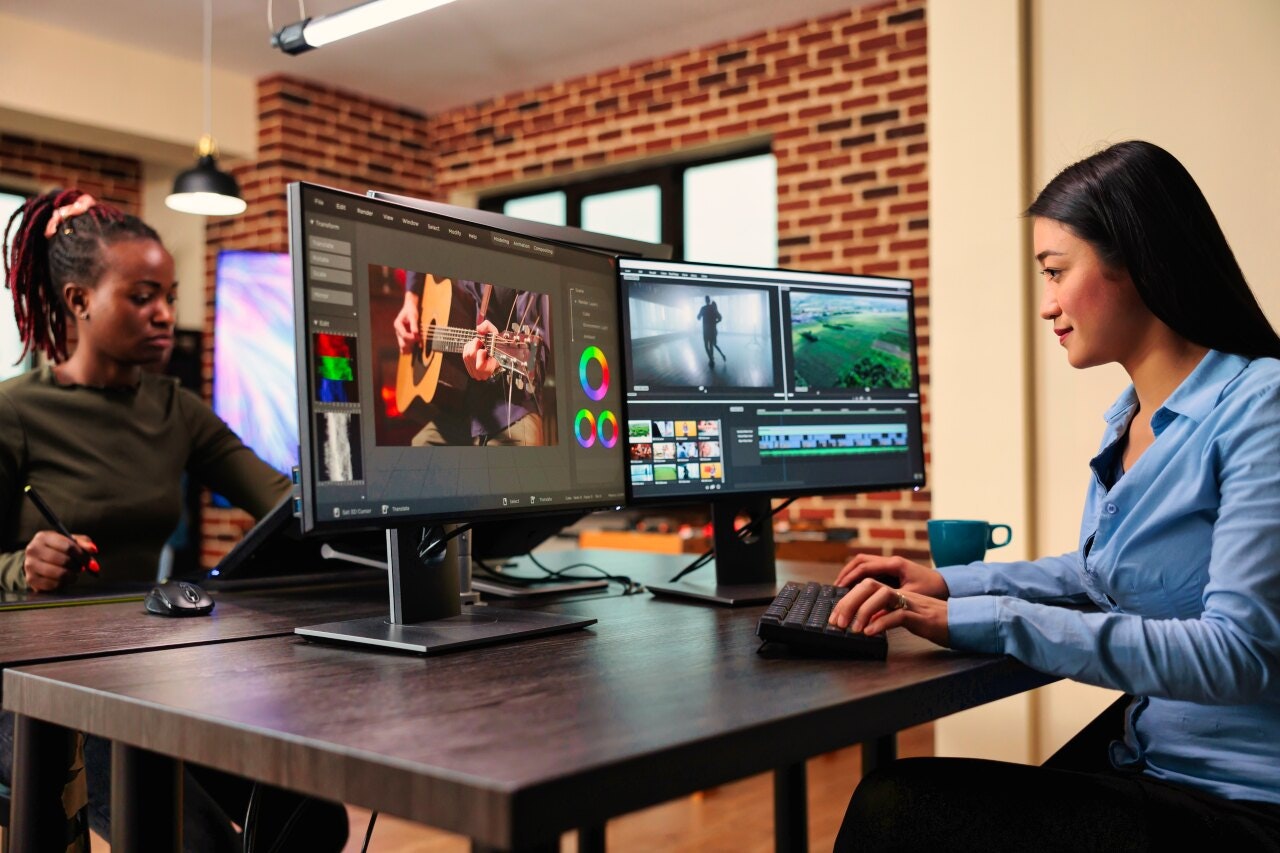
When you're looking to expand your company's learning courses into new markets, your eLearning video production process is vital.
With the right approach, tools, and strategy, you can create engaging and informative videos that are accessible to all your international audiences.
Scaling video production isn't easy. It requires careful consideration of the many elements that make up a good learning video, including subtitles, voiceover, on-screen actions, and more. It's important that you understand the best approaches to each of these elements so you can make cost-effective content decisions about your learning videos.
In our recent eLearning roundtable, a team of Rubric's eLearning localization experts discussed how global companies can effectively scale eLearning videos production.
Here are some of their top tips.
Why scale is so important for eLearning video production
When you design eLearning videos for different countries, it's important to think about how you will scale those videos.
Localizing eLearning videos can be a challenge because you are no longer just creating one version of each video, as you do when you are only producing content in one language for one market. Instead, you are creating multiple versions of the same video.
Failing to consider scale and localization can lead to several problems for international companies, including high localization costs, incompatibility of the learning content in some markets, complex video engineering, and ultimately poor learning experiences for some of your global learners.
Localization and video engineering costs can quickly add up. A small decision early in the video production process can cause delays and added costs that could have been easily avoided with a bit of planning.
The best way to ensure that your localization videos are optimized for different countries and cultures is to create a scalable eLearning video production pipeline.
Elearning video production basics: subtitles, voiceover, and machine translation
Scalable eLearning video production involves a variety of engineering steps and processing activities.
In our recent roundtable discussion, Rubric's team of localization experts gave some tips on the most common elements that affect video localization.
The first step is to consider how your videos will be consumed by your target audience.
Alicja Weikop, Program Manager at Rubric says:
"You will want to know how the users will watch the videos. Will they use their mobile phones while traveling or will they use a PC and watch them on a large screen? Will they want to download the videos and watch them offline so they can save on the data usage? Or would they prefer to stream videos?"

Subtitles
Probably the most common element in most localized videos is translated subtitles. These are important for helping learners to read along or following the content of the video. They are often the cheapest way to offer the content in multiple languages and also help you meet accessibility requirements.
Alicja says:
"The first question is "Do you need subtitles or do you need voiceover? Perhaps users watch videos on mute when they're commuting on public transport and doing the voiceover is a wasted effort. In this case, you would just provide them with subtitles so they can watch the videos silently on their phones."If they watch videos on YouTube, the platform has its own tools for uploading subtitles which are different from using a learning management system which perhaps has other requirements."
Voiceover
People sometimes assume that they will need to provide translated voiceover for their eLearning videos, but this is only sometimes the case.
Voiceovers can be expensive and time consuming to produce, especially when they are recorded by voice actors. For scalable videos, it's sometimes helpful to consider technologies like text to speech, which work by converting written text into audible words and can be used to create artificial voiceovers. This can reduce costs.
Machine translation
Another popular solution to reduce costs is to use machine translation. This involves using algorithms to automatically translate text from one language into another.
Alicja says:
"You could also consider if the content is going to be machine translation or human translation. If the content is very specialized and complex, it may be advisable to use only human translation. But if the content is very repetitive, structured well, and using simple language, it might be suitable for machine translation."
How to understand the needs of your global learners
When you are creating localized learning videos, it is important to consider the needs of your learners in all markets where the videos will be viewed.
But how can you find out what those needs are?
The best place to start is with your in-market salespeople. These people can provide valuable insights into local user preferences and help you create videos that really work.
As Alicja says:
"Understanding your audience and the appropriate channel for them to access the videos is key here. Understanding the demographic also helps you make certain decisions upfront, so that your localized content will meet their expectations."Most companies already have people on the ground in the countries for which they're designing eLearning. These will be the first people to ask. They'll be in the best place to understand the audience. They may have some tips and advice from their own experience of just living in that country – things that you would not have considered."
You could also consider conducting market research to gain a better understanding of your target learners. This will help you even better understand their needs, ensuring that your eLearning video production is done with accuracy and that your localization process is efficient.
The One Version: The key to creating easily localizable videos
A core concept when creating easily scalable eLearning videos is to create The One Version.
This means creating an eLearning video once and localizing it for different markets rather than creating multiple versions from scratch. This requires forethought, planning, and creativity to make sure that your eLearning video production works with minimal changes across all target markets.
Rebecca Metcalf, Rubric's Global Content Business Analyst says:
"Wherever you can, aim to create one version that will work for as big an audience as possible. An ideal scenario that we always suggest to clients is to create your content in such a way that it will work for all of your markets."That's the ideal. There are cases where you need a number of different versions. But you should aim to create the content once and localize it rather than having to make a change for each market to make it work."
When creating The One Version, look for ways that you can make the video as universal as possible. Use language, visuals, and music that will make sense in more than one market.

Hear more from the eLearning localizable experts
By applying these tips, you will help to ensure that your eLearning videos are as universal and easily localizable as possible.
In our eLearning roundtable discussion, a group of our localization experts at Rubric discussed even more tips on how to create cost-effective eLearning content that will work for all your global learners.